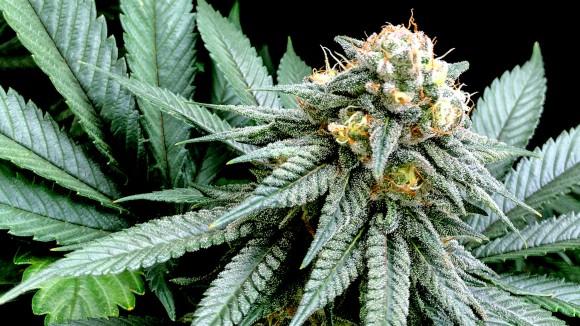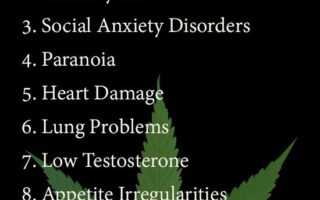Exploring the Mind: The Impact of Cannabinoids on the Brain
In the intricate tapestry of the human brain, a myriad of chemical interactions governs our thoughts, emotions, and behaviors. Among these neurochemical players, cannabinoids have emerged as a fascinating subject of study, capturing the attention of scientists and laypersons alike. Derived from both the cannabis plant and synthesized through laboratory processes, cannabinoids interact with the brain’s endocannabinoid system—a vital regulatory network involved in maintaining homeostasis. As public interest in cannabis and its derivatives grows, so too does the need for a deeper understanding of how these substances affect our mental faculties, mood, and overall neurological health. This article delves into the science behind cannabinoids, unraveling the complexities of their effects on the brain and illuminating the potential benefits and risks they carry. Join us on this journey as we seek to illuminate the hidden pathways through which cannabinoids influence the very essence of our minds.
Table of Contents
- Exploring the Neurological Pathways of Cannabinoids
- Understanding the Role of Endocannabinoids in Brain Function
- Effects on Mood and Cognitive Processes: A Dual Perspective
- Navigating Therapeutic Potential and Risks of Cannabinoid Use
- Q&A
- In Conclusion
Exploring the Neurological Pathways of Cannabinoids
Understanding how cannabinoids interact with the brain involves delving into the complex world of neurological pathways. These compounds, primarily derived from the cannabis plant, engage with the body’s endocannabinoid system (ECS), a crucial player in maintaining homeostasis. The ECS consists of a network of receptors found throughout the brain and body—primarily CB1 and CB2 receptors—which respond to both endogenous cannabinoids (produced by the body) and phytocannabinoids (from plants). When cannabinoids like THC and CBD enter the system, they bind to these receptors, triggering a series of biochemical responses that can influence mood, memory, pain perception, and even appetite.
Research indicates that cannabinoids can modulate neurotransmitter release by affecting calcium and potassium ion channels. This modulation leads to various effects based on the specific pathways involved, including:
- Altered Mood: Cannabinoids may promote feelings of euphoria or relaxation.
- Memory Enhancement or Impairment: Cannabinoids can influence short-term memory and cognitive function.
- Reduced Anxiety: Certain cannabinoids can impact anxiety levels, acting as a calming agent for some.
To illustrate these effects, the following table summarizes the key neurotransmitters involved in cannabinoid action:
| Neurotransmitter | Effect of Cannabinoids |
|---|---|
| Dopamine | Elevated mood and pleasure |
| Serotonin | Improved mood and reduced anxiety |
| GABA | Increased relaxation and reduced excitability |
Understanding the Role of Endocannabinoids in Brain Function
The intricate relationship between endocannabinoids and brain function reveals a fascinating network of interactions that govern various physiological processes. Endocannabinoids, which are naturally occurring compounds produced within the body, play a critical role in maintaining homeostasis by modulating neurotransmitter release. This modulation helps regulate several key functions in the brain, including mood, memory, and appetite. Their discovery has opened new avenues for understanding how our bodies respond to stress, pleasure, and pain, offering insights into conditions such as anxiety and depression.
As we delve deeper into the actions of endocannabinoids, it’s essential to note their role in synaptic plasticity—the brain’s ability to adapt and change throughout life. Endocannabinoids signal through cannabinoid receptors (CB1 and CB2), primarily located in the central nervous system. These receptors help facilitate communication between neurons, enhancing or inhibiting synaptic transmission based on the body’s needs. Moreover, the balance between endocannabinoid activity and other neurotransmitter systems like serotonin and dopamine illustrates a complex interplay vital for regulating emotions and cognitive functions. Understanding this balance is key to exploring therapeutic avenues for neuropsychiatric disorders.
Effects on Mood and Cognitive Processes: A Dual Perspective
The influence of cannabinoids on mood and cognitive functions is a complex interplay that often elicits contrasting viewpoints. On one hand, users report a heightened sense of relaxation and euphoria, which can stem from the activation of the brain’s endocannabinoid system. This system plays an essential role in mediating emotional responses and maintaining homeostasis. However, on the other hand, some studies highlight potential negative consequences, such as anxiety and impaired cognitive performance, particularly with high THC concentrations. Established effects include:
- Elevated Mood: Many cannabinoids, especially THC, can result in increased happiness and relaxation.
- Impaired Memory: Short-term memory can be affected, leading to difficulties in learning and retention.
- Anxiety Alterations: While some find relief from anxiety, others experience heightened nervousness or paranoia.
Examining this phenomenon requires consideration of individual differences, including dosage, frequency of use, and personal psychological conditions. While some cannabinoids may enhance cognitive flexibility and creativity for certain individuals, others might encounter slowed processing speed or challenges with executive functions. To visualize these contrasting effects, the following table offers a snapshot of common outcomes associated with cannabinoid use:
| Effect | Positive Outcomes | Negative Outcomes |
|---|---|---|
| Relaxation | Reduced stress, better sleep | Drowsiness |
| Cognitive Performance | Increased creativity | Poor memory retention |
| Mood Regulation | Improved mood | Increased anxiety |
Navigating Therapeutic Potential and Risks of Cannabinoid Use
Cannabinoids, the active compounds found in cannabis, interact with the brain’s endocannabinoid system, influencing various physiological and cognitive processes. This interaction can lead to both beneficial and adverse effects, making understanding the therapeutic potential and associated risks essential for those considering cannabinoid usage. The therapeutic properties may include:
- Pain relief: Cannabinoids often serve as analgesics, providing relief from chronic pain conditions.
- Anti-inflammatory effects: Certain cannabinoids may help reduce inflammation, aiding in the management of various autoimmune disorders.
- Neurological benefits: Some studies suggest potential neuroprotective properties, offering hope for conditions like epilepsy or multiple sclerosis.
- Psychological impact: Cannabinoids may help alleviate symptoms of anxiety and depression for some users, contributing to improved mental health.
However, along with these potential benefits, there are noteworthy risks associated with cannabinoid use. Some individuals may experience adverse side effects, including:
- Cognitive impairment: Short-term use can lead to difficulties with memory, focus, and decision-making.
- Dependency issues: Regular use can result in tolerance and withdrawal symptoms, fostering addiction risks.
- Psychoactive effects: High doses of THC may induce anxiety or paranoia in certain users, leading to discomfort and negative experiences.
- Interaction with other medications: Cannabinoids can interact with various medications, potentially diminishing their efficacy or heightening side effects.
Q&A
Q&A: Exploring the Impact of Cannabinoids on the Brain
Q: What are cannabinoids?
A: Cannabinoids are chemical compounds found in cannabis plants. The most well-known cannabinoids are tetrahydrocannabinol (THC) and cannabidiol (CBD). THC is primarily responsible for the psychoactive effects that produce the sensation of being “high,” while CBD is celebrated for its potential therapeutic benefits without the intoxicating effects.
Q: How do cannabinoids interact with the brain?
A: Cannabinoids interact with the brain by binding to cannabinoid receptors, which are part of the endocannabinoid system (ECS). This system plays a crucial role in regulating various physiological functions, including mood, memory, appetite, and pain perception. When cannabinoids bind to these receptors, they can enhance or inhibit neurotransmitter release, leading to a variety of effects.
Q: What are the specific cannabinoid receptors in the brain?
A: The two primary cannabinoid receptors are CB1 and CB2. CB1 receptors are predominantly found in the brain and are associated with the psychoactive effects of THC, affecting everything from memory and movement to pleasure and coordination. CB2 receptors are more commonly found in the immune system and peripheral tissues, and they play a role in managing inflammation.
Q: What effects do cannabinoids have on mood and emotions?
A: Cannabinoids, particularly THC, can influence mood by altering neurotransmitter activity. Users often report feelings of euphoria and relaxation. However, these effects can vary widely; some individuals may experience anxiety or paranoia, highlighting the complex nature of cannabinoid effects on emotional states.
Q: Can cannabinoids impact memory?
A: Yes, cannabinoids can affect memory, particularly short-term memory. THC, for instance, has been shown to impair the ability to learn new information or recall recent events. This is largely attributed to its action on the CB1 receptors in the hippocampus, a brain region critical for memory formation.
Q: Are there potential therapeutic uses for cannabinoids in brain health?
A: Absolutely. Research suggests that cannabinoids, especially CBD, may have therapeutic potential for various neurological disorders, including epilepsy, multiple sclerosis, and Alzheimer’s disease. Their neuroprotective properties could help reduce inflammation and oxidative stress in the brain, fostering an environment conducive to healing.
Q: What should people be aware of before using cannabinoids?
A: Individuals should be mindful of the legality and potential side effects of cannabinoids. Moreover, the effects can vary based on factors such as dosage, method of consumption, and individual neurobiology. It’s always advisable to consult with a healthcare professional before incorporating cannabinoids into a wellness routine, particularly for those with existing health conditions or who are taking other medications.
Q: What are the future directions for research on cannabinoids and the brain?
A: Future research on cannabinoids and the brain is expansive and promising. Scientists are exploring how cannabinoids can be utilized in treating various psychiatric disorders, chronic pain, and neurodegenerative diseases. Understanding the nuanced effects and interactions of cannabinoids on the brain will likely yield new therapeutic strategies and contribute to advancements in both medicine and pharmacology.
—
This Q&A aims to shed light on the fascinating world of cannabinoids and their impact on the brain, providing both a primer for the curious and insights for those looking to further explore this evolving field.
In Conclusion
the intricate dance between cannabinoids and the brain reveals a complex tapestry of interactions that continue to fascinate researchers and enthusiasts alike. As we journey through the neural pathways shaped by these compounds, it becomes evident that their impact is far from simplistic. From the modulation of pain and anxiety to the potential enhancement of creativity and cognitive function, cannabinoids challenge our understanding of the mind and body.
Yet, as with all powerful substances, there are nuances to consider. The effects of cannabinoids can vary widely among individuals, influenced by factors such as genetics, environment, and the specific strain or formulation used. This variability underscores the importance of continued research to unravel the mysteries of how these compounds interact with our intricate neural systems.
As we stand on the brink of an ever-expanding frontier in cannabinoid research, one thing remains clear: the quest to understand how cannabinoids affect the brain is far from over. With ongoing exploration, we can hope to uncover deeper insights that may guide future therapeutic applications, shedding light on the potential benefits and risks associated with these remarkable molecules. As we navigate this evolving landscape, staying informed and curious will empower us to engage with the science of cannabinoids in a meaningful way, bridging the gap between nature and our neurological realities.



